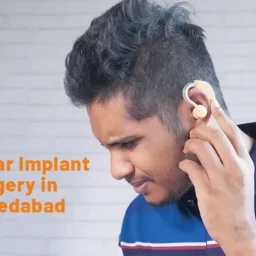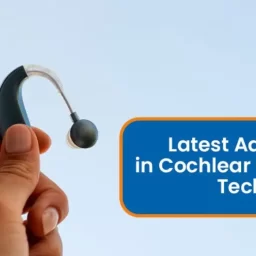
Neck cancer treatment has advanced significantly, with minimally invasive surgical techniques leading the way in offering patients better outcomes with less physical trauma. Aashwi ENT Hospital is at the forefront of these innovations, employing cutting-edge, minimally invasive methods to treat neck cancer. These techniques provide several advantages, including reduced recovery time, less post-operative pain, and a quicker return to daily activities.
In this article, we’ll explore the minimally invasive surgical options available for neck cancer at Aashwi ENT Hospital and highlight the patient benefits associated with these advanced approaches.
Minimally Invasive Surgical Techniques for Neck Cancer
1. Endoscopic Laser Surgery
Endoscopic laser surgery is a key minimally invasive option used for treating early-stage neck cancers, particularly those affecting the larynx (voice box) or pharynx (throat). This technique involves inserting a thin, flexible tube with a camera (endoscope) through the mouth to access the tumor. A high-precision laser is then used to remove the cancerous tissue.
- Benefits: With no external incisions required, this method minimizes tissue damage and scarring. It is particularly beneficial for patients who want to preserve their voice and avoid more extensive surgery.
- Recovery: Patients typically experience shorter hospital stays and quicker recovery times, often resuming normal activities within a week or two. Post-surgical pain is also reduced compared to traditional open surgery.
2. Robotic-Assisted Surgery
Robotic-assisted surgery is another advanced minimally invasive technique available at Aashwi ENT Hospital. Using the da Vinci® Surgical System, surgeons can perform highly precise procedures with the help of robotic arms controlled remotely. This technology allows for smaller, more accurate incisions and greater maneuverability, especially in hard-to-reach areas of the neck.
- Benefits: Robotic surgery offers a high degree of precision, which minimizes damage to surrounding healthy tissues. This leads to less post-operative pain, fewer complications, and a significantly shorter recovery period.
- Recovery: Patients who undergo robotic surgery often have shorter hospital stays and a quicker return to normal activities, with reduced scarring and a lower risk of infection.
3. Transoral Robotic Surgery (TORS)
For cancers of the throat or mouth, Transoral Robotic Surgery (TORS) is a groundbreaking technique that offers excellent results with minimal invasiveness. This surgery is performed through the mouth, using robotic instruments to remove tumors without making large external incisions. TORS is particularly effective for cancers at the base of the tongue and in the oropharynx.
- Benefits: TORS reduces the need for extensive open surgery, leading to faster recovery times, less blood loss, and a reduced risk of complications. Because the procedure is performed through the mouth, there is no need for disfiguring incisions on the neck.
- Recovery: Patients typically spend less time in the hospital and experience less post-operative discomfort. The technique also helps preserve critical functions like speech and swallowing.
4. Minimally Invasive Thyroidectomy
When neck cancer involves the thyroid gland, a minimally invasive thyroidectomy can be performed. Unlike traditional thyroid surgery, which requires a large incision, minimally invasive techniques use smaller incisions to remove part or all of the thyroid. This can be done through an endoscope or a robotic-assisted approach, both of which minimize trauma to surrounding tissues.
- Benefits: The smaller incisions used in minimally invasive thyroidectomy lead to less scarring, reduced post-operative pain, and a quicker recovery. Patients also experience less disruption to nearby muscles and nerves.
- Recovery: Recovery times are significantly shorter, with most patients able to return home the same day or after an overnight stay. The smaller incision also results in less visible scarring, which is particularly important for procedures on the neck.
Patient Benefits of Minimally Invasive Surgery
1. Faster Recovery Time
One of the most significant benefits of minimally invasive surgeries for neck cancer is the faster recovery time. Since these techniques involve smaller incisions and less disruption to surrounding tissues, patients can return to their normal routines much sooner compared to traditional open surgeries. For example, with robotic surgery or laser procedures, many patients are able to resume light activities within days, and full recovery often takes just a few weeks.
2. Reduced Pain and Discomfort
Minimally invasive techniques greatly reduce post-operative pain and discomfort. Smaller incisions and precision surgical methods mean less trauma to the body, resulting in lower levels of pain. Patients typically require less pain medication during recovery, contributing to an overall smoother post-surgery experience.
3. Minimal Scarring
Traditional open neck surgeries often leave significant scarring, which can affect a patient’s appearance and confidence. Minimally invasive techniques, on the other hand, use much smaller incisions, often hidden in natural skin folds or inside the mouth, resulting in less visible scarring. This is a major advantage, especially for patients concerned about the aesthetic outcomes of neck surgery.
4. Lower Risk of Complications
Minimally invasive surgeries are associated with a lower risk of complications such as infection, bleeding, or nerve damage. Because these procedures are more precise and involve smaller incisions, there is less exposure to potential contaminants, and the body’s natural healing process is less disrupted.
5. Preservation of Function
Many minimally invasive surgeries, especially those using robotic systems or laser technology, are designed to preserve essential functions like speech and swallowing. For example, in the case of a partial laryngectomy performed with a laser, the surgeon can remove only the cancerous tissue while leaving the majority of the voice box intact, ensuring that patients retain their ability to speak.

















